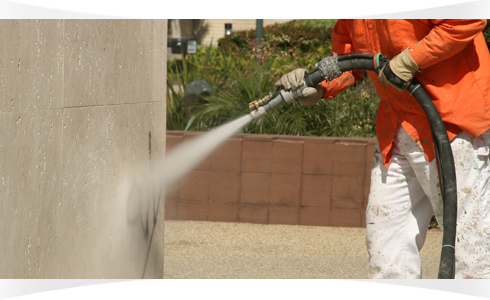



The skills, knowledge, and experience required to repair damaged or deteriorated structures are decidedly different from those required to build new structures. These factors demand a contractor with extensive specialty repair experience and proven quality control and quality assurance programs
ABSTRACT specializes in integrating technology-driven concrete repair and restoration solutions through our specialty contracting services. Our focus is not just to repair the apparent damage, but to help our clients understand the root cause of their concrete infrastructure problems so that we can provide long-term, durable solutions.
Structural & Non-Structural Cast-In-Place Concrete Repair
Post-Tensioned Concrete Repair
Precast Concrete Repair
Equipment & Pump Foundation Repair
This full system represents the latest in reinforced glass flake epoxy and polyurethane technology, and completely outdates the use of aggregate/sand as a reinforcement to the coating.
| CONCRETE PROBLEMS | WHY REPAIR? | REPAIR PROCESS | REPAIR METHODS |
| Defects: design, materials, construction | Restore or improve structural integrity | Seeing an EFFECT | Dry-Pack Method for deep and narrow cavities |
| Damage: overload, fire, impact, chemical spill | Improve appearance | Determining the CAUSE | Preplaced Aggregate Method for restoration of large areas such as walls, foundations and spillways |
| Deterioration: metal corrosion, erosion, freeze/thaw, sulfate attacks | Improve durability | Deciding whether the problem needs to be repaired | Partial or Full Depth Concrete Replacement by casting or patching, using various types of concrete, e.g. ordinary concrete, mortar, low-slump highly-dense concrete, latex-modified concrete, epoxy resin, polymer concrete |
| Workshop & Garages | Improve functional performance | Conducting some form of condition survey to quantify problems | Shotcrete and Gunite |
| Provide water-tightness | Dealing with repair analysis and engineering issues in the repair | Epoxy Mortar Injection | |
| Determine repair strategies that includes methods, techniques and repair materials | Cement Mortar Injection | ||
| Finally, accomplishing the repair | Crack Sealing and Filling by epoxy injection or cement grout-injection | ||
| Surface Protection by Overlays or by various Sealing coats | |||
| Pre-stressing for water tanks, slabs, deflection control |
In the repair strategy (step 6) we develop means, methods and material to fix the problem:
Surface repair - removal and replacement of deteriorated concrete
Strengthening - strengthen or enhance capacity of a structural member
This can be achieved in a number of ways
1. Enlargement
2. Composite Construction
3. Post-tensioning
4. Stress-Reduction
5. Internal Grouting
6. External Grouting
And can be attempted by the following means:
1. 'replacing' poor quality or defective material by better quality material
2. 'attaching' additional load-bearing material
The new load-bearing material will usually be:
Highly quality concrete
Reinforcing steel bars (longitudinals, laterals, stirrups, etc.)
Thin steel plates and straps (externally bonded by epoxy)
various combinations of these
3. 're-distribution of the loading actions' through ‘imposed deformation’ on the structural system.
Stabilization - halting unwanted condition like cracking or settlement
Water-proofing - stops fluid from entering or exiting concrete structure
Protection - protect concrete from aggressive environment
Accomplishing the repair (step 7) after selecting a repair method is by: (1) choice of the proper repair material or system for the in place requirements that are needed and (2) selection of the best placement technique for that material. Placement techniques for horizontal, vertical or overhead repairs are: a) Trowel applied (drypack), b) Form & Pump, c) Form & Pour, d) Full-depth repair, e) Shotcrete, f) Overlays
ABSTRACT’s project management and field personnel carefully preplan every project. Our crews address all areas of concern during project pre-planning, including safety, constructability, budgeting, scheduling, and phasing as it relates to optimizing efficiency and potential disruption to ongoing operations.